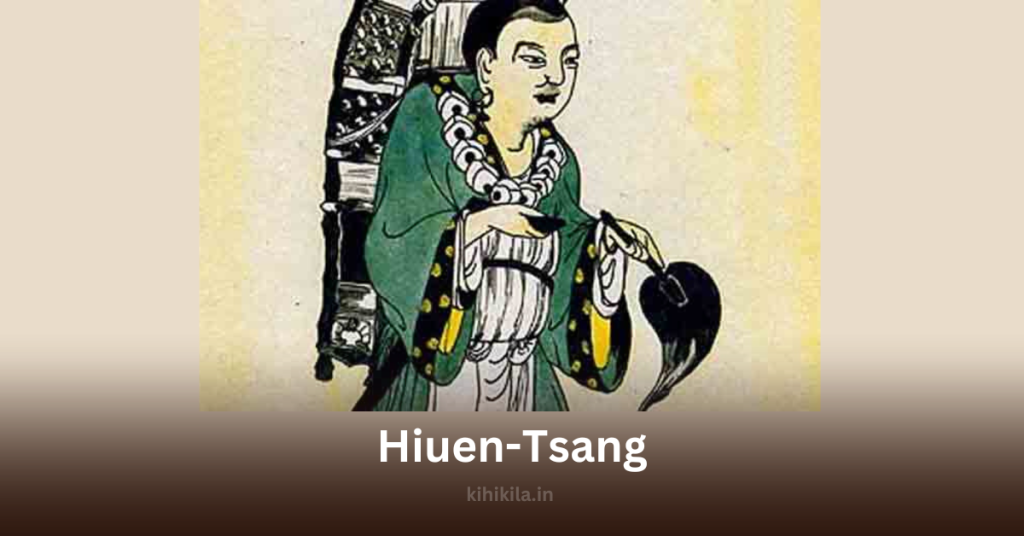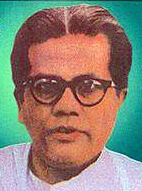Hiuen-Tsang, also known as Hiuen Tsang, was a renowned Chinese traveler, scholar, and Buddhist monk who visited India to study Buddhism and its origins. Among his many stops in India, he traveled to Kamarupa (modern-day Assam) during the reign of King Kumar Bhaskar Varman (600–650 A.D.), one of the greatest rulers of the Varman dynasty. His accounts of Kamarupa provide invaluable insights into the region’s history, culture, and geography.
Early Life of Hiuen-Tsang
Born in 600 A.D. in Guoshi Town, Luozhou (near present-day Luoyang, Henan, China), he came from a family known for its scholarly pursuits. He was the youngest of four children and received a strong classical education. Later, he converted to Buddhism and became deeply interested in the discrepancies he noticed in Buddhist sacred texts. His quest for authentic knowledge motivated him to undertake a perilous journey to India in 629 A.D., traveling on foot across Central Asia.
After reaching India in 633 A.D., he spent several years at Nalanda University, the most prestigious center of learning at the time, where he gained in-depth knowledge about Buddhism.
Hiuen-Tsang’s Visit to Kamarupa

He visited Kamarupa during 642-643 A.D. He was warmly welcomed by King Bhaskar Varman, who greeted him with a traditional Assamese jaapi (a conical bamboo and cane hat). During his stay, he attended the royal court and documented his observations about the kingdom and its ruler.
In his writings, he noted that the western boundary of Kamarupa extended to the Karatoya River, while the eastern boundary reached Dikkaravasini (modern-day Sadiya). His records also highlight the agricultural richness of the region, specifically mentioning jackfruits and coconuts, which were prominent produce in Kamarupa.
Hiuen-Tsang observed that Buddhism was not widely practiced in Kamarupa during that period, although Hinduism flourished under Bhaskar Varman’s patronage. His accounts praised the administrative brilliance of the king and the prosperity of the kingdom.
Association with King Harshavardhana
During his stay in India, he became closely associated with Harshavardhana, the ruler of Kanauj and a prominent supporter of Buddhism. King Harshavardhana invited both Hiuen-Tsang and Bhaskar Varman to his court. The two kings formed a strong friendship, and together, they traveled to Kanauj, where Bhaskar Varman was greeted with great honor.
Unique Insights Found Here
- Unlike other summaries, our content specifically highlights Hiuen-Tsang’s warm reception in Kamarupa with the traditional Assamese jaapi, a symbol of Assam’s unique cultural identity.
- We provide specific details about the geographical boundaries of Kamarupa, as mentioned by Hiuen-Tsang, which often go unnoticed in other accounts.
- We emphasize the agricultural wealth of Kamarupa, including the mention of jackfruits and coconuts, offering a glimpse into the region’s rich natural resources during that era.
- The connection between Bhaskar Varman and Harshavardhana, along with his role in fostering this alliance, is elaborated to showcase the cultural and political significance of his visit.
Hiuen-Tsang passed away in 664 A.D. in China, but his records remain a valuable source of information about ancient India, including Kamarupa. His accounts continue to shine a light on the legacy of King Bhaskar Varman and the cultural richness of Assam during that period.
FAQ:
Q 1. Who was Hiuen-Tsang, and why is he significant in history?
He was a Chinese Buddhist monk, scholar, and traveler who visited India during the 7th century to study Buddhism and document his journey.
Q 2. Why did Hiuen-Tsang visit Kamarupa (Assam)?
He visited Kamarupa during his exploration of India to study its culture, rulers, and Buddhist practices. He attended the court of King Kumar Bhaskar Varman.
Q 3. What did Hiuen-Tsang write about King Bhaskar Varman?
Hiuen-Tsang praised Bhaskar Varman as a capable and wise ruler who welcomed him warmly and maintained a prosperous kingdom.
Q 4. What geographical boundaries of Kamarupa were mentioned by Him?
Hiuen-Tsang described Kamarupa’s western boundary as the Karatoya River and the eastern boundary as Dikkaravasini (modern-day Sadiya).
Q 5. What did Hiuen-Tsang say about Buddhism in Kamarupa?
He noted that Buddhism was not prominent in Kamarupa during his visit and that Hinduism was the dominant religion under Bhaskar Varman’s rule.
Q 6. What unique cultural aspects of Kamarupa did Hiuen-Tsang document?
He mentioned the traditional Assamese jaapi, which he received as part of his welcome, and also referenced local produce such as jackfruits and coconuts.
Q 7. What was the relationship between Hiuen-Tsang, Bhaskar Varman, and Harshavardhana?
Bhaskar Varman and Harshavardhana were allies, and Hiuen-Tsang played a role in their association. Bhaskar Varman accompanied him to Harshavardhana’s court in Kanauj.
Q 8. What was Hiuen-Tsang’s primary purpose in visiting India?
He came to India to study Buddhism at its source, understand its teachings, and collect authentic texts.
Q 9. What is the significance of Hiuen-Tsang’s accounts of Kamarupa?
His records provide valuable insights into the culture, administration, and geography of ancient Assam during the 7th century.
Q 10. How are Hiuen-Tsang’s writings relevant to understanding ancient India?
His detailed accounts offer a firsthand perspective of Indian society, religion, and rulers during the 7th century, making them an important historical resource.












